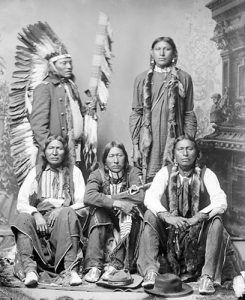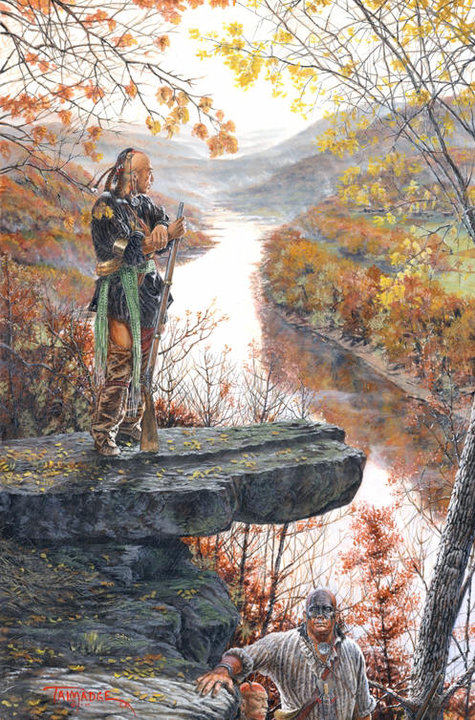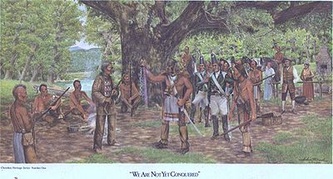
The Unyielding Spirit: Unpacking the Legacy of the Chickamauga Cherokee
The name "Chickamauga" resonates with a distinct and potent energy in the annals of Native American history. It conjures images of fierce independence, unyielding resistance, and a profound commitment to ancestral lands. More than just a geographical designation, the Chickamauga Cherokee represent a pivotal chapter in the broader narrative of the Cherokee Nation, a faction whose defiance against colonial encroachment profoundly shaped the course of the American frontier and left an indelible mark on the Cherokee identity that persists to this day. To understand the Chickamauga is to understand the complex, often tragic, yet ultimately resilient spirit of a people determined to protect their sovereignty against overwhelming odds.
At its core, the Chickamauga story is one of a schism, a principled stand against the tide of westward expansion and land cessions that began in the late 18th century. While the larger Cherokee Nation, often referred to as the "Overhill" towns, grappled with diplomatic solutions and, at times, reluctant compromises with the burgeoning American states, a significant portion of the Cherokee people refused to cede an inch. Led by the charismatic and uncompromising warrior, Dragging Canoe, these dissenters broke away from the main council around 1777, relocating their towns to the Chickamauga Creek area (near present-day Chattanooga, Tennessee) and establishing a new base of operations from which to wage war against the encroaching settlers.
Dragging Canoe, the son of the revered Attakullakulla (Little Carpenter), was a visionary and a pragmatist. He foresaw the inevitable consequences of ceding land piece by piece. His famous pronouncement to the Transylvania Land Company, after the fraudulent Treaty of Sycamore Shoals in 1775, serves as a chilling prophecy and a declaration of war: "You have bought a fair territory, but you must know that every foot of it has been stained with blood, and it will be stained again." This powerful statement became the foundational philosophy of the Chickamauga, a commitment to defending their homeland "until the Great Spirit takes away the power of the red man."

The Chickamauga, often called the "Lower Cherokee" or "Cherokee-Chickamauga," established a confederation of towns that became a beacon of resistance. Their strategic location, deep within the mountainous terrain and along vital waterways, allowed them to launch devastating raids on frontier settlements across Tennessee, Kentucky, Georgia, and the Carolinas. They skillfully employed guerilla tactics, utilizing their intimate knowledge of the land to their advantage, and formed crucial alliances with other aggrieved Native American tribes, including the Shawnee, Muscogee (Creek), and Delaware, as well as with the British during the American Revolutionary War.
Their resistance was not merely reactive; it was a sustained, two-decade-long campaign that demonstrated remarkable resilience and strategic acumen. From 1777 until 1794, the Chickamauga were a constant thorn in the side of American expansion. They intercepted supply lines, attacked forts, and harassed settlers, effectively slowing the westward movement of the United States. Their actions during the Revolutionary War, siding with the British, were a calculated move to protect their sovereignty against what they perceived as a greater threat from the American revolutionaries, who were openly coveting their lands.
One of their most formidable strongholds was Nickajack Cave, a massive limestone cavern near the Tennessee River. This natural fortress served as a refuge, a meeting place, and a storage depot for supplies and weaponry. From its hidden depths, Chickamauga warriors would emerge to launch their attacks, only to vanish back into its labyrinthine passages, making them notoriously difficult to track and defeat. The cave itself became a symbol of their elusive and defiant spirit.
The Chickamauga’s leadership extended beyond Dragging Canoe. After his death in 1792, his nephew, John Watts, and other prominent leaders like Doublehead and Bloody Fellow, continued the fight. While the intensity of the conflict waxed and waned, and internal debates about strategy persisted, the core commitment to resisting land encroachment remained. However, the sheer military and demographic might of the United States proved increasingly overwhelming. American forces, seeking to break the Chickamauga’s power, launched several punitive expeditions, most notably the Nickajack Expedition in 1794, which resulted in the destruction of their main towns and forced many to disperse or seek peace.
The eventual "peace" was a weary one, culminating in treaties that chipped away at Cherokee territory, despite the Chickamauga’s prolonged struggle. The Treaty of Tellico Blockhouse in 1794, and subsequent agreements, effectively brought an end to the Chickamauga Wars. Many of the surviving Chickamauga warriors and their families eventually reintegrated into the broader Cherokee Nation, though their legacy of fierce independence continued to influence future generations.
The spirit of the Chickamauga, however, did not die with the wars. It morphed and manifested in different ways. Their experience of violent displacement and the constant threat to their lands undoubtedly contributed to the Cherokee Nation’s later, more unified, and sophisticated efforts to resist removal through legal and political means. The trauma of the Chickamauga Wars, the memory of leaders like Dragging Canoe, and the principle of never ceding land without a fight, became embedded in the collective memory of the Cherokee people.
When the forced removal of the Cherokee Nation, known as the Trail of Tears, occurred in the 1830s, the irony was not lost. The descendants of those who had fought so desperately to hold onto their lands were now forcibly marched thousands of miles west. Yet, even in this darkest hour, the Chickamauga spirit of resilience found expression. The determination to survive, to maintain their culture, language, and governance in the face of immense suffering, echoed the unwavering resolve of their forebears.
Today, there is no distinct, federally recognized "Chickamauga Cherokee" tribe separate from the three main federally recognized Cherokee bodies: the Cherokee Nation, the Eastern Band of Cherokee Indians, and the United Keetoowah Band of Cherokee Indians. The descendants of the Chickamauga are found within these larger tribal entities, carrying forward their ancestral heritage. However, the historical identity of the Chickamauga remains a powerful and respected part of Cherokee history and self-understanding.

For many within the Cherokee Nation, the Chickamauga represent the epitome of sovereignty and self-determination. Their story serves as a reminder of the sacrifices made to protect their way of life and a testament to the enduring power of resistance. Cultural preservation efforts within the Cherokee Nation, including language revitalization, the teaching of history, and the honoring of ancestral traditions, implicitly draw strength from this legacy. The courage of Dragging Canoe and his followers, who chose to fight rather than submit, continues to inspire a profound sense of pride and a deep commitment to protecting tribal sovereignty in the modern era.
The Chickamauga Cherokee are more than just a historical footnote of frontier conflict. They embody a crucial period of Native American resistance, a testament to the human spirit’s capacity for defiance in the face of overwhelming adversity. Their story is a complex tapestry woven with threads of valor, tragedy, and an unyielding love for their ancestral lands. By remembering the Chickamauga, we gain a deeper understanding not only of the Cherokee people’s journey but also of the foundational struggles that shaped the very landscape and identity of the United States. Their legacy serves as a powerful reminder that history is often written not just by the victors, but by those who, against all odds, refuse to be silenced.


